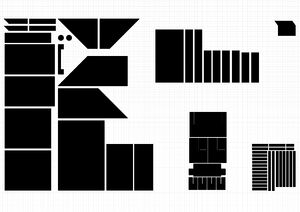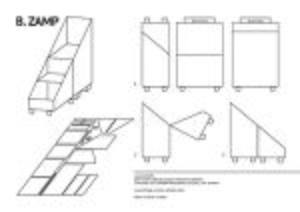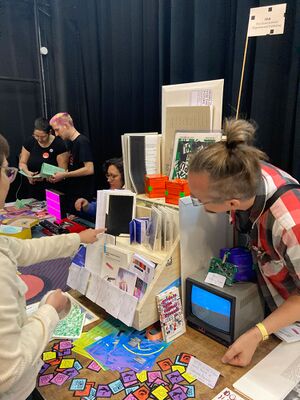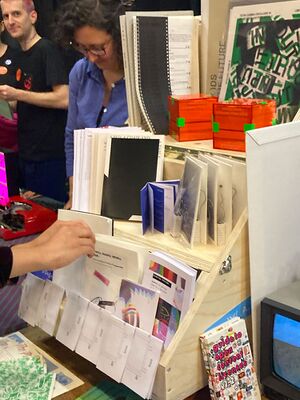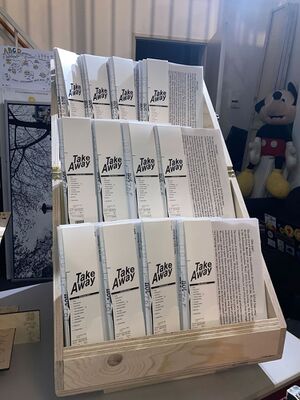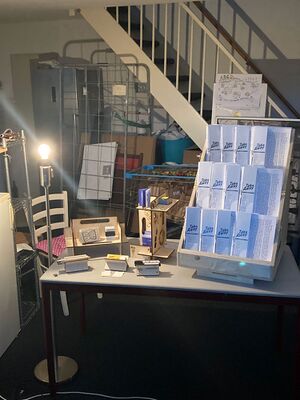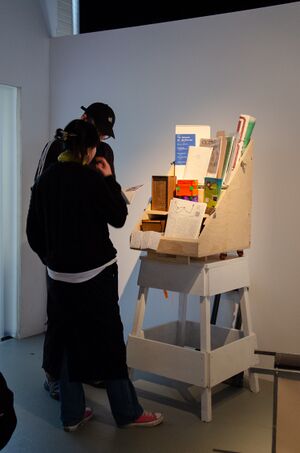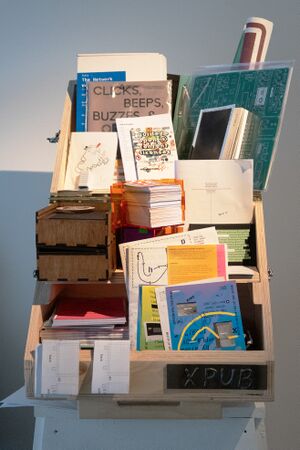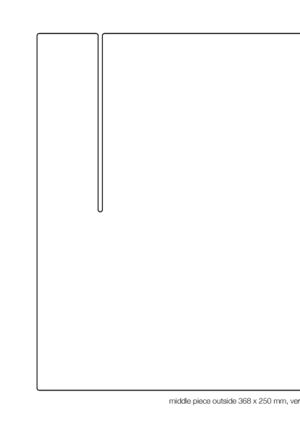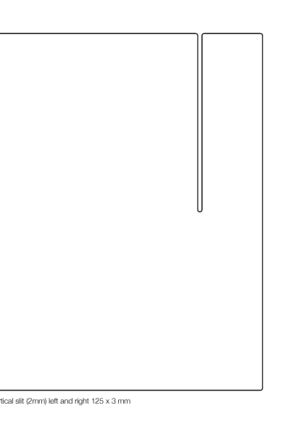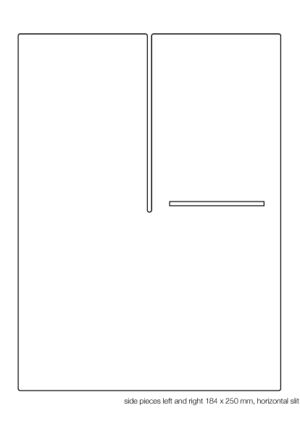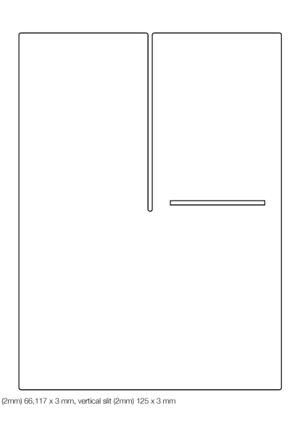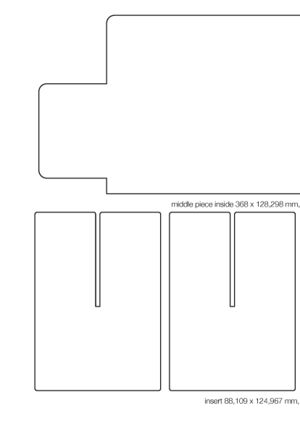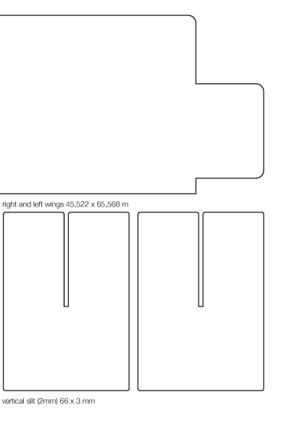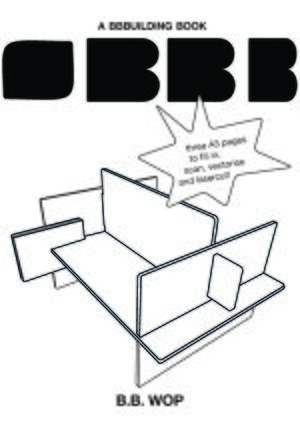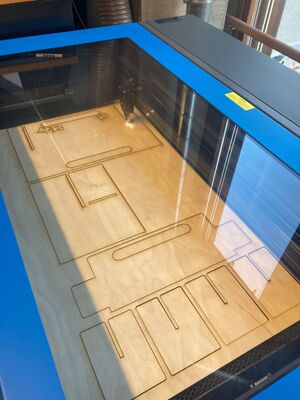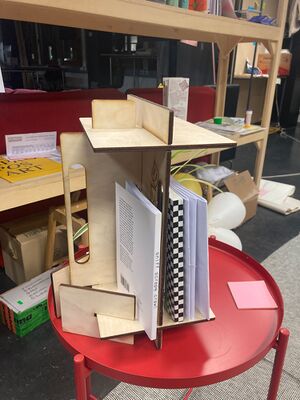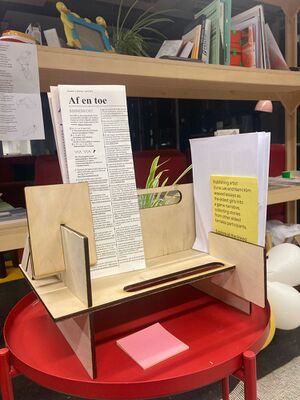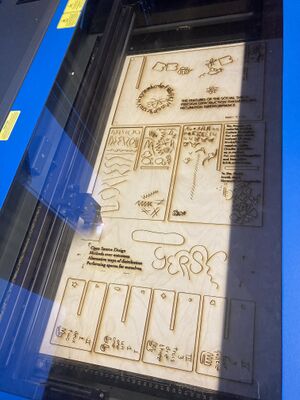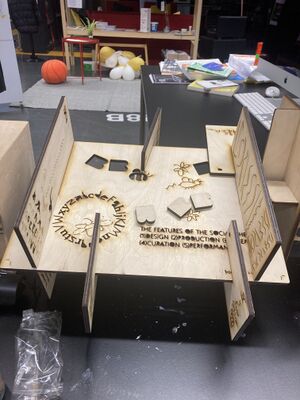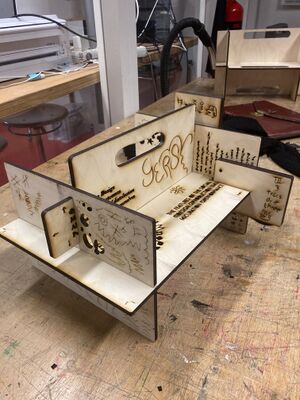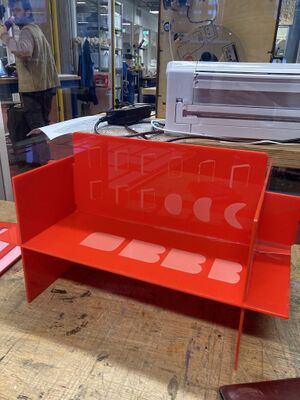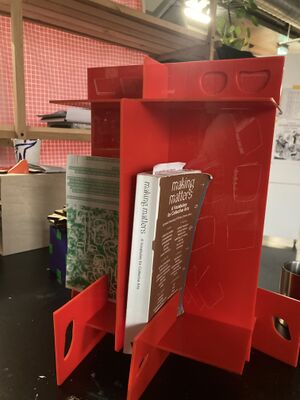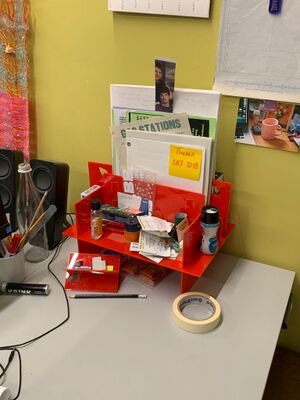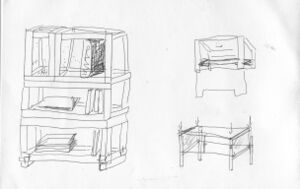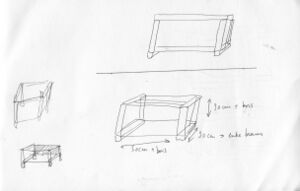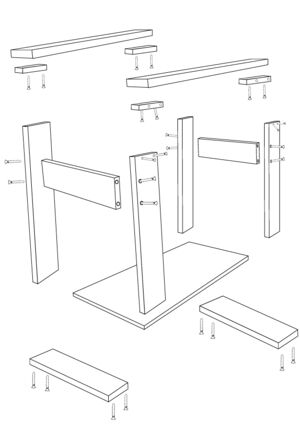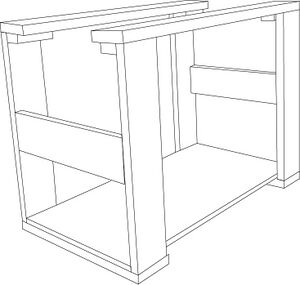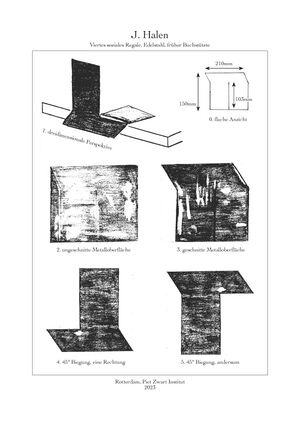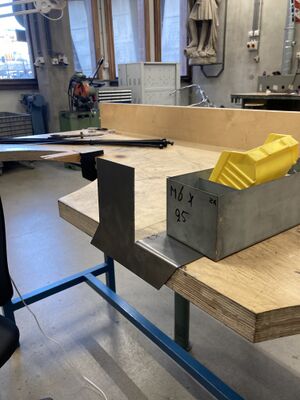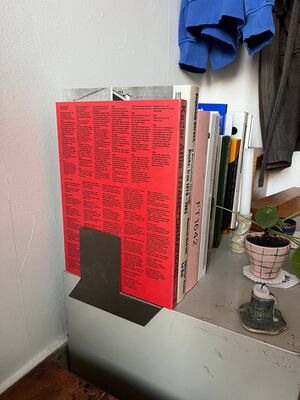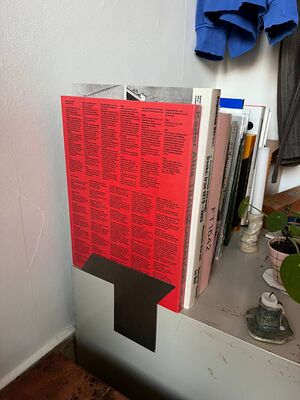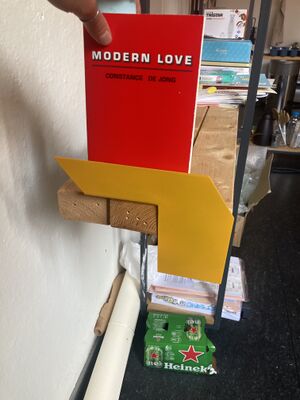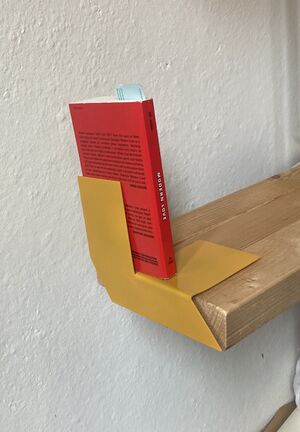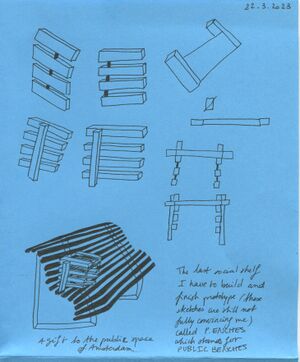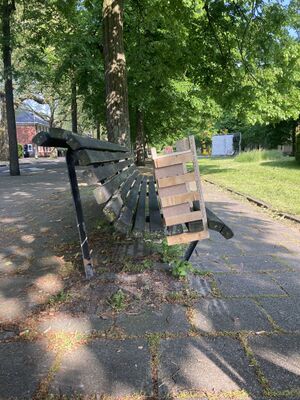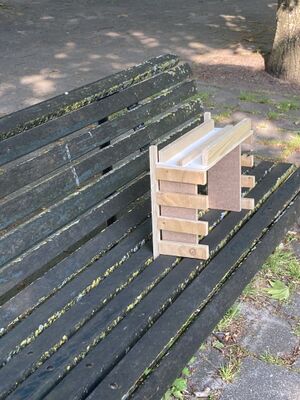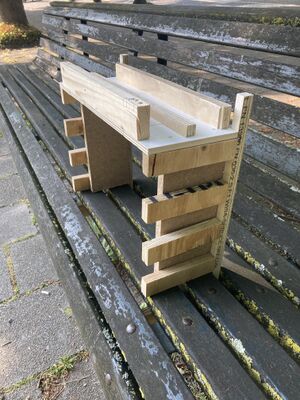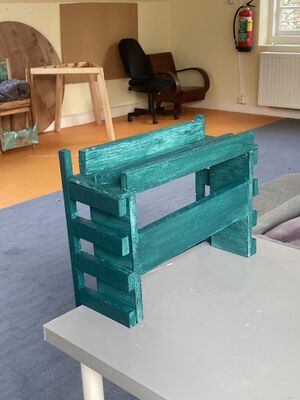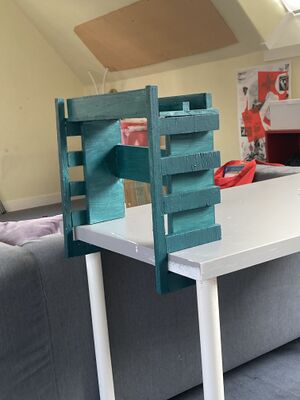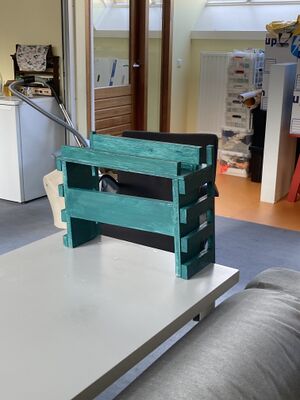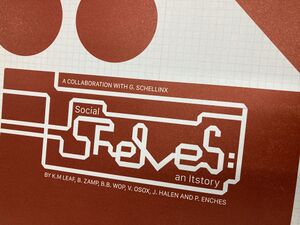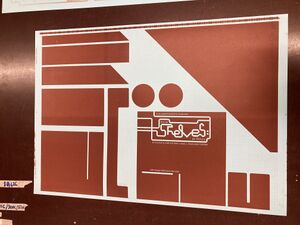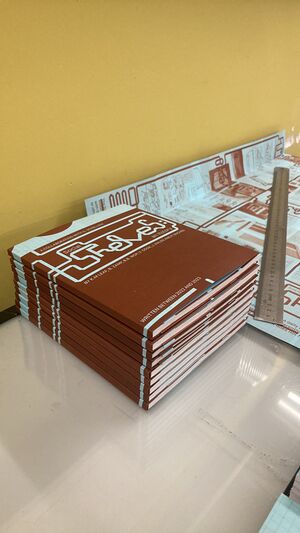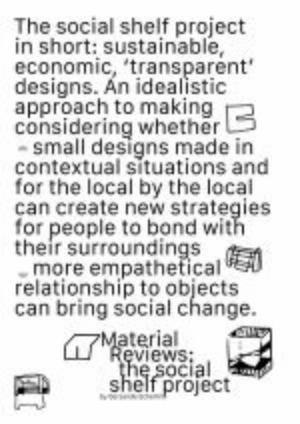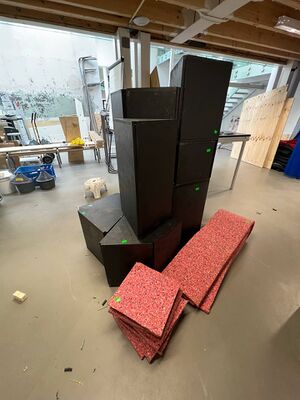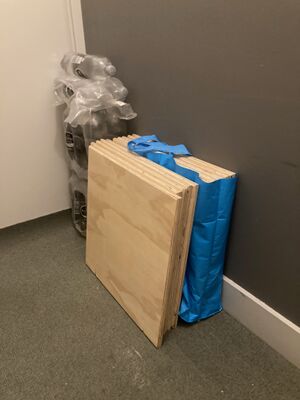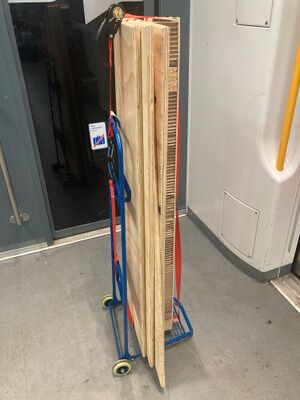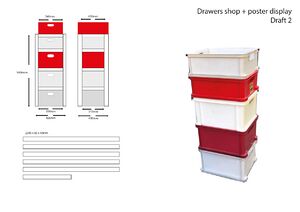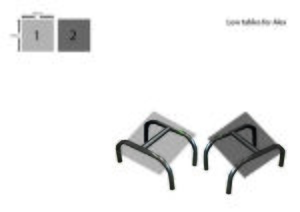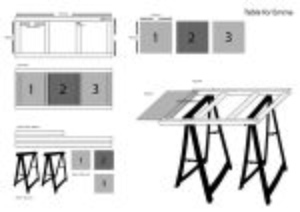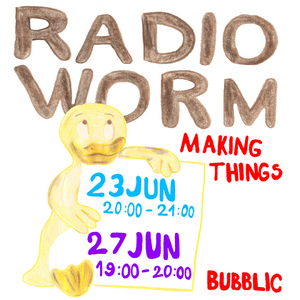The social shelves project
About
The social shelf project inquires how shifted perspectives in relation to materiality can produce alternative relationship between users/makers and small objects. In the context of social design, reciprocity between human and non-human actors is key. This bubble action uses the mundane space of a shelf as a material and conceptual constraint to initiate conversations with people and their direct surroundings, engaging them in new material processes.
The social shelf project in short: sustainable, economic, ‘transparent’ designs. An idealistic approach to making considering whether small designs made in contextual situations and for the local by the local can create new strategies for people to bond with their surroundings more empathetical relationship to objects can bring social change.
excerpt from Social Shelves: an Itstory
'The social shelf project is a two-fold investigation. First it aims to re-visit the mundane
space most individuals interact with on a daily basis: the shelf. In turn, with a new
acquired understanding of that space, it invites, you, the reader, to re-think your
relationship to objects both as potential users and makers.
N.B. This object is purposely referred to as social shelf and not simply "bookshelf" or
"shelf", as the object under study does not only function as a space for books or other
artefacts, but also as a physical trope for social structures and community building.
This project is a world-building experiment. Using non-human perspectives it attempts to
redefine what material thinking—broadly understood as the encounter of practice and
theory in artistic and design fields—can mean to anyone in and outside of those fields.
We, social shelves will talk to you, the reader, directly. Together we will investigate the
following question: How can a better understanding of socialised objects1 create
opportunities to affect the social design of tomorrow?
As part of the original case study for this theoretical investigation, material experiments
take place in parallel to the writing process. One month after the other, between 2022
and 2023 five social shelves have been prototyped, built, and trialed across different
locations in Amsterdam and Rotterdam, the Netherlands.'
1 The identification ‘socialised objects’ is a self-assigned term for artefacts that fulfil their true nature in relation to others. A term that could be compared in a human-field-theory to what Bruno Latour referred to as the anthropomorphism of an object, ‘which has human shape or that which gives shape to humans.’ (Latour, 1992, p.235).
Research
Five social shelves
To learn more about the social shelves please read the Material Reviews and Social Shelves: an Itstory.
B. Zamp
This social shelf has been manufactured to respond to the needs of transport and display of XPUB publications. The department's many appearances at different fairs and events need an object that can host varying size of publications produced within the master.
Technical Sheet
Suitcase mode
on the road 3 November 2022: market, elevator, escalator, train
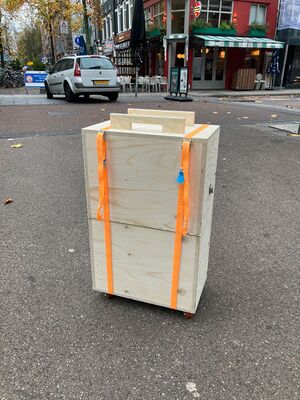
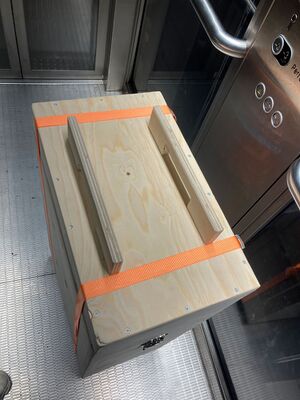
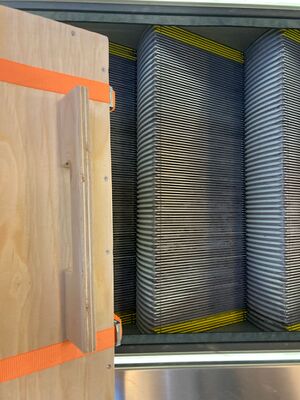
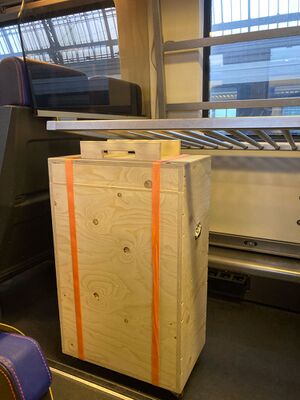
Display mode
WOW, Zinecamp, November 2022
Het Bollenpandje, Take-Away, November 2022
Platform Post, Not Just a Fair, April 2023
B.B. Wop
This social shelf has been manufactured to respond to the needs of storage and display of GRA (Gerrit Rietveld Academie) Students. Made in line with the BB tools series, produced since 2019.
Technical Sheet
Prototype 1
Prototype 2
Prototype 3 in the Book Binding Workshop
V. Osox
This social shelf has been manufactured to respond to the needs of storage and motion of a new active squat in Amsterdam. Made to resemble the dimensions of moving boxes.
Sketches
Technical Sheet
J. Halen
This social shelf has been manufactured to respond to the need of support of a collection of heavy and big publications from a classmate. A two-fold metal book-end in Rotterdam.
Technical Sheet
Paper Prototypes
Metal Prototype
Painted Metal Prototype
P. Enches
This social shelf has been manufactured as a gift and an invitation to the public space, for the benches of Amsterdam.
Sketches
Technical Sheet
WIP
Left-over wood prototype
Painted wood prototype
Social Shelves: an Itstory
Thesis
Publication
Read Social Shelves: an Itstory here
Graduation Show
Material Reviews: the social shelf project
Publication
Read the Material Reviews here
Graduation Show Installation
WIP
Collected Materials
Materials lend and donated by the Ultradependent Public School, BAK.
Design complementary items
Making Things Bubblic on Radio Worm
Across two evenings XPUB will share their work and research through interviews. Interviews here are interpreted in different ways by each student - they will structure dialogues, discussions and bubbles of thought, mixed with infomercials and sonic material that shares more of our practices. The radio shows are a teaser to invite you to our graduation show. Hosted by Ål Nik [Alexandra Nikolova] and Gersande Schellinx.
Listen to the radio shows here
Discussion with H
G: I’ve been working on something called the social shelves project. It started with an object given by my mother
years ago, an old antique book support/end. I’ve been calling a shelf, because you can travel with it, unfold it in any location so that you always have a bookshelf with you. I wanted to focus on that one object in the context of my master. The hosting space, the small scale of the object that allowed for more experiments and prototyping. I thought
‘let’s call it “social shelves’’’, to cover every possible type of shelf: ‘book support, bookends, bookshelf, case…’ anything related to this and not limited to books. I wanted to really focus on the object, without a priori limiting what should go on it. I decided to build five different social shelves. Ultimately, my fantasy around the project was ‘how do we make small designs more accessible to create more custom made but still sustainable and affordable objects’. Ideally, I would have gone to different places and help people make these objects for themselves; me, acting as a
facilitator, rather than a designer-author. Because of the time restrictions and the need to do more research on these topics, I decided to cut the workshop aspect for now. Instead, I searched for places in different contexts in need of shelves. The shelves that come out of this are all to me prototypes of what can be. They are not end products.
H: Yeh, always a work in progress.
G: Yeh case studies for these contexts. Can we do these small designs? The idea is that also if you can understand how
they are made, you can also repair them easily or reproduce or… You don’t have this helplessness that a lot of people have with the objects around them that if something breaks it becomes obsolete. Their premature obsolescence creates a lot of waste. The last one which is not published yet… Oh yes, I started to think about the moment I let the shelves be in their context as a a publishing moment. I haven’t ‘published’ P. Enches yet, it is still in my studio.
H: Publishing the shelves!
G: I don’t want to display [in the graduation show] these objects that are not in context, because it would turn them into products. So for the show I want to only have the suitcase on display. I’d rather build new shelves for the show that are in context than bring the other ones out of their context. I’m not gonna build a bench for this object [P.
Enches] for example. But what happens to it if I show it without a bench? How will I make shelves for the show? C said
‘oh we have all these scraps’; for me this was very exciting because I’d much rather work from these than make a design that needs a very expensive material base to be obsolete after three days, it’s such a waste.
H: Totally, and I also think that, using scrap material gives it an ongoing life and I think that’s really nice. How do you do something with cheap materials and also accessible building methods, the process of building together and all that kind of stuff…

